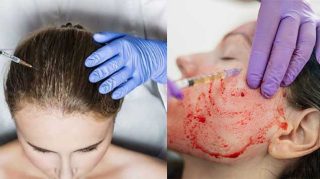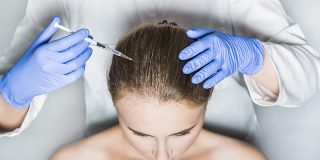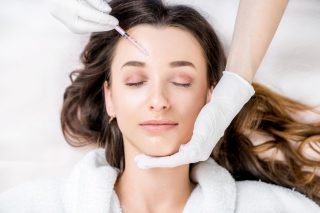What is platelet-rich plasma?
Platelet-rich plasma consists of two elements: plasma, or the liquid portion of blood, and platelets, a type of blood cell that plays an important role in healing throughout the body.
Platelets are well-known for their clotting abilities, but they also contain growth factors that can trigger cell reproduction and stimulate tissue regeneration or healing in the treated area. Platelet-rich plasma is simply blood that contains more platelets than normal.
To create platelet-rich plasma, clinicians take a blood sample from the patient and place it into a device called a centrifuge that rapidly spins the sample, separating out the other components of the blood from the platelets and concentrating them within the plasma.
What is a PRP injection?
After creating platelet-rich plasma from a patient’s blood sample, that solution is injected into the target area, such as an injured knee or a tendon. In some cases, the clinician may use ultrasound to guide the injection. The idea is to increase the concentration of specific bio proteins or hormones, called growth factors, in a specific area to accelerate the healing process.
The mechanism behind PRP injections is not completely understood. Studies show that the increased concentration of growth factors in platelet-rich plasma may stimulate or speed up the healing process, shortening healing time for injuries, decreasing pain and even encouraging hair growth.
What is PRP treatment used for?
PRP injections are used for a range of conditions from musculoskeletal pain and injuries to cosmetic procedures.
Tendon, Ligament, Muscle and Joint Injuries
PRP injections may be able to treat a range of musculoskeletal injuries and conditions. For example, chronic tendon injuries such as tennis elbow or jumper’s knee can often take a long time to heal, so adding PRP shots to a treatment regimen can help to stimulate the healing process, decrease pain and enable a return to activities sooner.
Post-surgical Healing
Clinicians first used PRP to accelerate healing after jaw or plastic surgeries. Now, post-surgical PRP injections have expanded to help heal muscles, tendons and ligaments, as procedures on these tissues have notoriously long recovery times.
Osteoarthritis
Early studies indicate that PRP injections may help treat osteoarthritis pain and stiffness by modulating the joint environment and reducing inflammation, but research is growing.
Hair Loss
PRP injections can be effective in treating male pattern baldness, both in preventing hair loss and promoting new hair growth. PRP can also aid in the stimulation of hair growth after hair transplants.
Skin Rejuvenation
PRP injections are sometimes used as an anti-aging treatment, but there is little evidence to show that PRP reduces wrinkles and other signs of aging.
If you are considering PRP injections, be sure to talk with a board certified dermatologist about all the benefits and risks.



